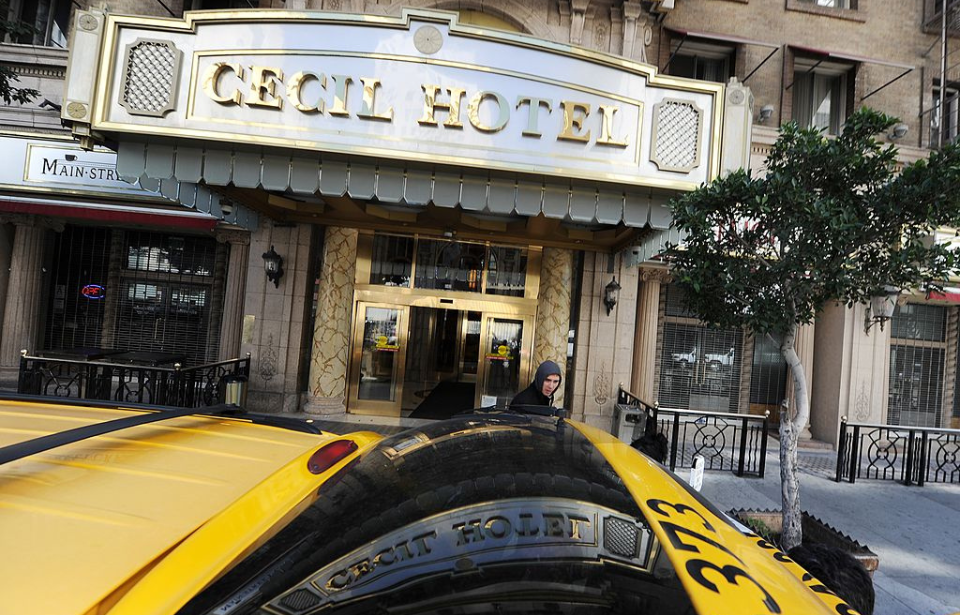Nestled in the heart of downtown Los Angeles, the Cecil Hotel stands as a sentinel to a bygone era. Its history is interwoven with tales of glamour, mystery and tragedy. Since its opening in 1927, the site has become an infamous landmark, attracting attention not for its architectural beauty or hospitality, but, instead, for the dark events that have unfolded within its walls.
A promising start amid roaring twenties grandeur
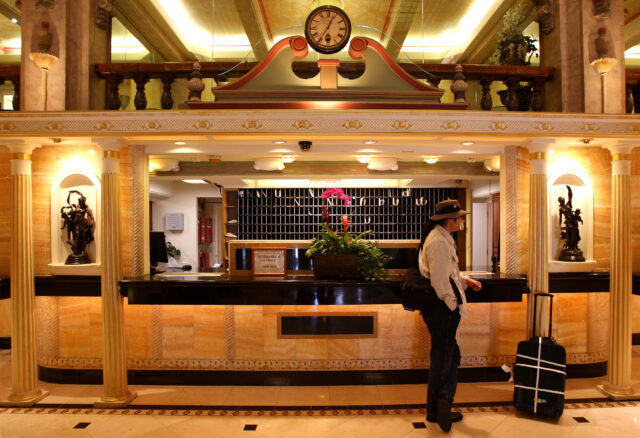
In its heyday, the Cecil Hotel was a beacon of opulence amid the revolutionary atmosphere of the Roaring Twenties. Erected in 1924 by three hoteliers, it was designed in the opulent Beaux Arts style, meaning the project had a pretty hefty price tag of $1.5 million.
Boasting an impressive 700 rooms over 14 floors, the Cecil Hotel promised a glamourous stay for the well-to-do travelers and socialites of the era. Its most notable feature was its magnificent marble lobby, boasting stained-glass windows and alabaster statues. For those keen on keeping their public image up, the location was the place to stay.
While the Cecil Hotel was able to navigate the Great Depression with relative ease, the same couldn’t be said for the surrounding area. The effects of economic decline began to show, with Los Angeles’ Central City East region earning the moniker “Skid Row” for the increase in the number of homeless individuals living on the streets.
Becoming synonymous with tragedy and mystery
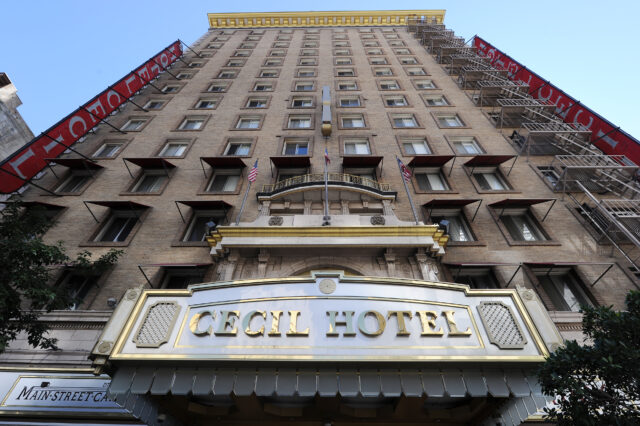
The Cecil Hotel’s shift from elegance to infamy was gradual but unyielding. Over the years, the location found itself at the center of numerous unsettling events, from untimely deaths to criminal activities. The first person to take their own life there was W.K. Norton, who, in 1931, died in his room after taking capsules containing poison. This tragedy was followed by other suicides over the 1940s and ’50s, leading the Cecil Hotel to earn the grim moniker, “The Suicide.”
Along with being the site of many untimely deaths, the Cecil Hotel also became a popular spot for illicit drug use and prostitution, largely due to its affordability and the anonymity it afforded to its guests. There was even a gruesome murder that took place in 1964, which remains unsolved.
The Cecil Hotel’s guest list reads like a who’s who of the criminal underworld, further cementing its unsavory reputation. Notably, it’s rumored to have housed serial killers Richard Ramirez (the “Night Stalker”) and Jack Unterweger, who reportedly continued his murderous activities while staying at the location. These chilling associations have added a layer of infamy to the Cecil Hotel’s history, making it a focal point for true crime enthusiasts and historians alike.
Elisa Lam reintroduces the Cecil Hotel into the mainstream
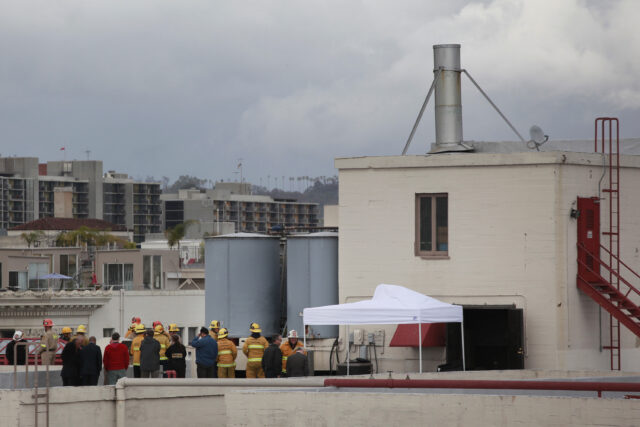
While the aforementioned events lent themselves to the Cecil Hotel’s reputation, it was the 2013 disappearance and death of Canadian tourist Elisa Lam that brought it into the wider public consciousness.
In early 2013, Lam had been visiting California on a solo trip. On January 28, she checked into the Cecil Hotel, and while initially assigned to a shared room was moved after her roommates complained to staff about odd behavior, including writing concerning notes and not allowing them into the room without a password. Her unusual behavior was further documented at a live taping of the late-night show Conan (2010-21).
While Lam was scheduled to check out on January 31, she never did, and no one could get a hold of her. This prompted her parents to report her missing to the Los Angeles Police Department, who searched the premises and obtained surveillance footage, the latter of which saw her acting strangely in an elevator.
This prompted several theories, with some speculating she was hiding from someone and others believing her actions were the result of her struggles with mental health (she’d been diagnosed with depression and bipolar). Many have even speculated that her movements were the result of paranormal goings-on.
On February 19, after guests had complained of low water pressure and an odd taste, Lam’s body was found floating in one of the Cecil Hotel’s rooftop water tanks. While an autopsy was unable to concretely determine the cause of death, the coroner deemed it an accidental drowning, with bipolar disorder being a contributing factor.
Paranormal phenomena allegedly occur at the Cecil Hotel
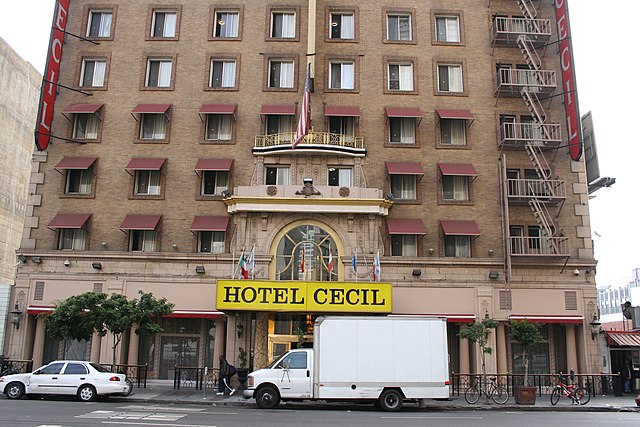
Over the years, numerous guests and employees have reported strange occurrences, from ghost sightings to unexplained noises, contributing to the Cecil Hotel’s haunted reputation as one of the most haunted hotels in the world. Many have speculated that the spirits of those who’ve lost their lives on the premises haunt the site, creating an eerie stay for those brave enough to book a room.
These tales have become part of the Cecil Hotel’s lore, attracting paranormal investigators and thrill-seekers eager to experience the supernatural firsthand. Whether these stories are rooted in fact or fueled by the hotel’s tragic past, they add another layer of intrigue to this storied establishment.
Influence of the Cecil Hotel
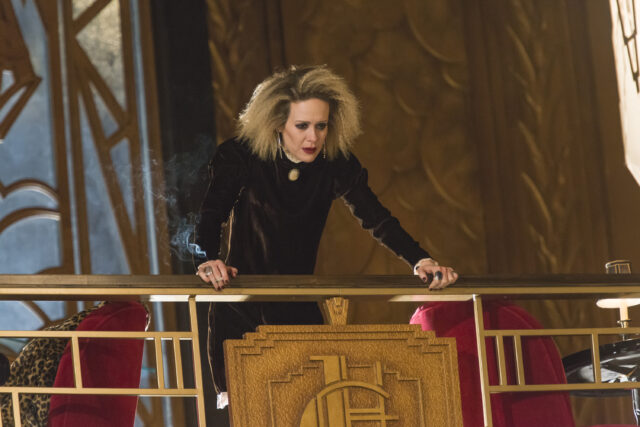
The Cecil Hotel has captivated the imagination of artists and creators, influencing various works of fiction and documentaries. Its eerie ambiance and sinister history have made it an ideal setting for horror stories, most notably serving as an inspiration for the the fifth season of American Horror Story, aptly titled American Horror Story: Hotel (2015-16).
The phenomenon of true crime tourism has brought a new type of visitor to the Cecil Hotel: those drawn by its grim past. This fascination with the macabre raises ethical considerations about the consumption of tragedy for entertainment, with the 2021 Netflix documentary, Crime Scene: The Vanishing at the Cecil Hotel, only fueling the intrigue.
What does the future of the Cecil Hotel look like?
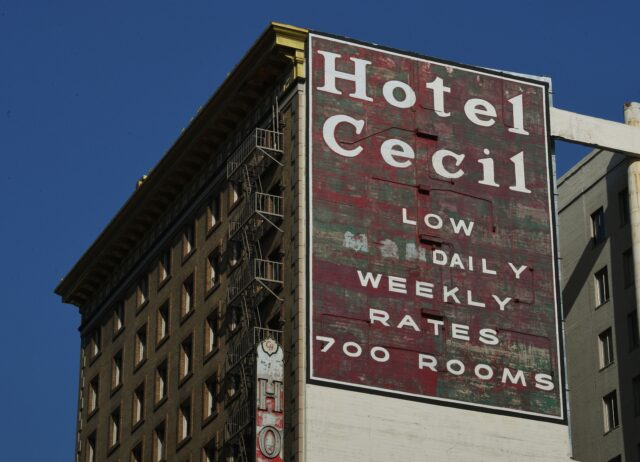
The Cecil Hotel’s location, adjacent to Skid Row, plays a significant role in its narrative. The area’s homeless population and socio-economic challenges have impacted the site’s identity and clientele, and its fate has since been drawn into discussions regarding social responsibility and urban development.
More from us: Mary Ann Bevan: The Life and Legacy of the ‘World’s Ugliest Woman’
In 2017, the Los Angeles City Council voted to make the Cecil Hotel a Historic-Cultural Monument, with it closing to undergo renovations that same year. Following a delay, it was reopened in 2021 as an affordable housing complex. While it’s difficult to predict what the site’s future will look like, it appears as though it’ll be working to change the public’s perception of it, from a location of tragedy to one that aims to give struggling families a chance.
